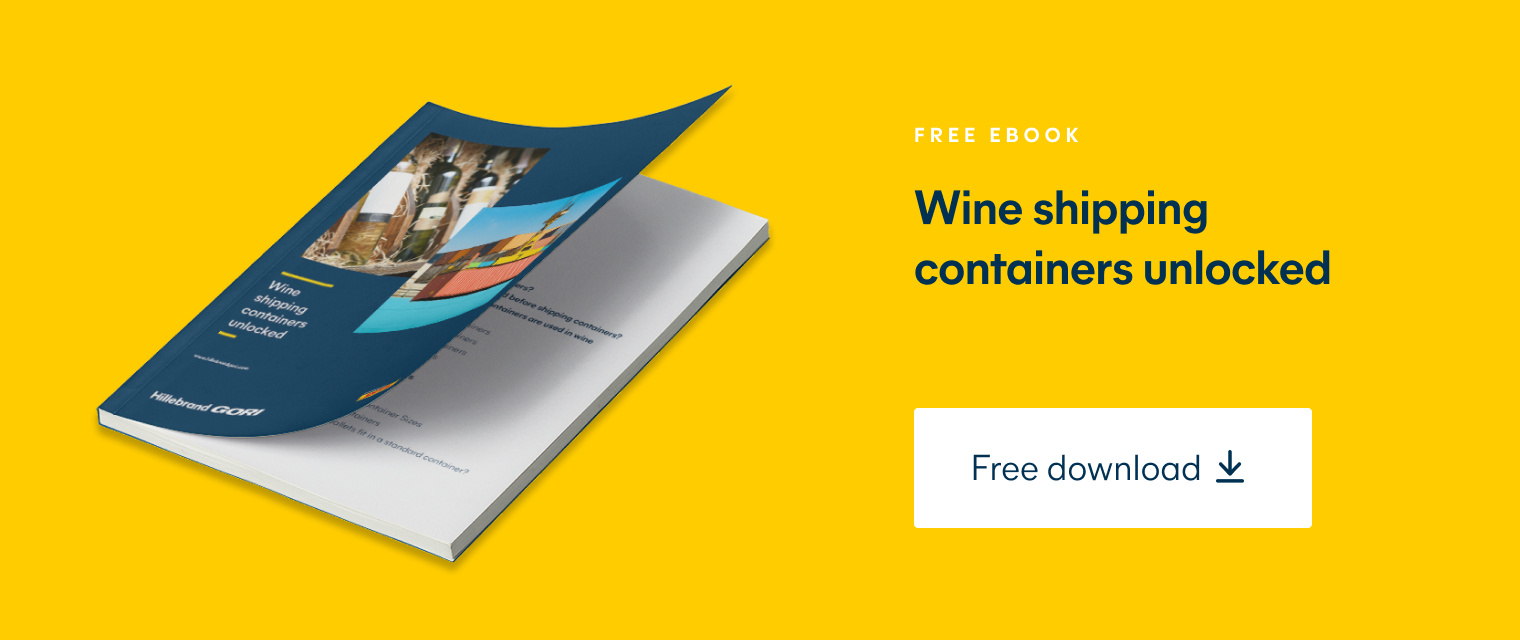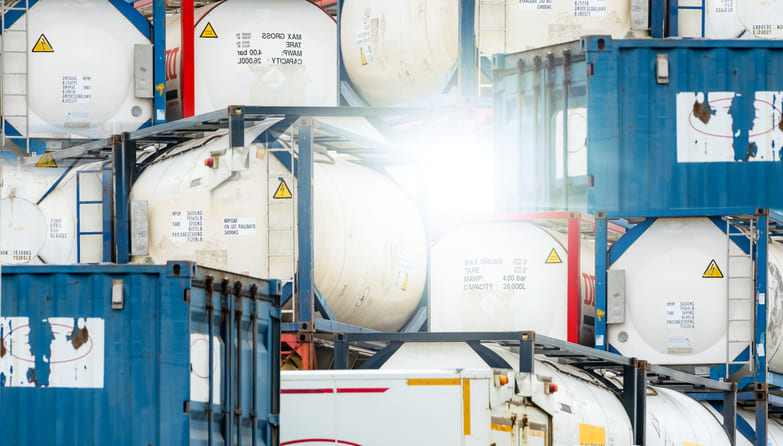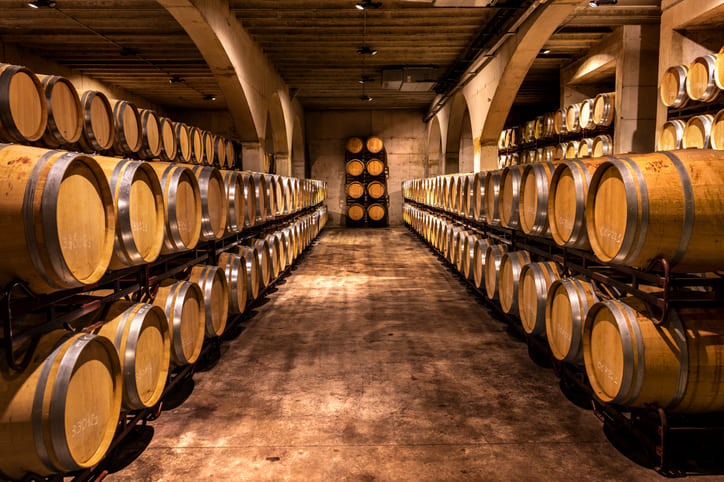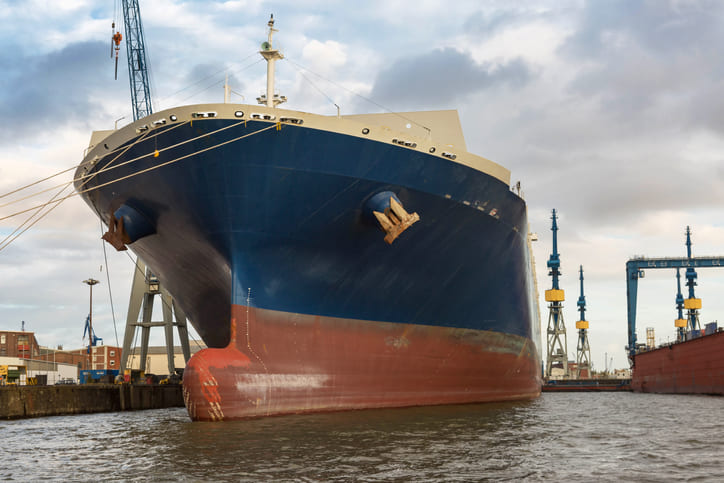Share this post
Freight Containers: How They're Used In the Wine Industry
The history of freight containers is a fascinating one.
They have revolutionised the way goods are shipped worldwide, and the wine industry has benefited greatly from this innovation. Freight containers are durable, secure, and in specific formats, offer protection from the elements.
But where did they come from, and how did they become such an essential part of the supply chain?
How the first standard freight container revolutionised shipping
In 1956, the first standard freight container was created.
American entrepreneur Malcom McLean, who owned a trucking company, designed the container after he realised that loading and unloading cargo from trucks was very time-consuming and inefficient. With the help of an engineer, McLean designed a large metal box that could be easily loaded onto a truck. This container could then be transferred to a ship, train or truck with little effort.
This new system was much faster and more efficient than the previous method of shipping cargo, and it quickly caught on. Soon, almost all goods were being shipped in containers.
Cargo, shipment and container: What's the difference?
It is important to understand the difference between cargo, a shipment and a container.
Cargo is the actual goods being shipped. A shipment is the quantity of cargo shipped at one time. And a container is the large metal box in which the cargo is shipped.
Different types of ships are used to transport various kinds of cargo. Tankers, for example, are huge cargo ships that transport liquid products, such as oil.
Container ships, on the other hand, carry multiple containers that can each hold different types of cargo. These vessels are designed to be more versatile, and they can carry a wide variety of goods.
The most common types of freight containers
Freight containers are typically made from steel, which makes them able to withstand a lot of wear and tear.
They are stackable, so they can be easily loaded onto ships, trains and trucks. All shipping containers must adhere to the standards of the International Organisation of Standardisation (ISO) to be used for international transport.
There are four main types of freight containers:
Dry freight containers are the most common type of container. They are large boxes with no special features and come in various sizes, including 20-foot, 40-foot, 40-foot high cube (HC) — a foot taller — and 45-foot HC.
Dry freight containers with insulation liners help keep goods at a consistent temperature. This type of container is typically used for shipping commodities such as wine that needs to be preserved at a specific temperature range.
Refrigerated freight containers (reefers) are large metal boxes with built-in refrigeration systems. These containers can maintain a consistent temperature, even in very hot or cold climates. Refrigerated freight containers are typically used for shipping commodities such as wine when need to be shipped at a concrete/specific temperature.
ISO tank containers are special containers that can also be used to transport liquids classed as hazardous. These food-grade tank containers are suitable for rail, road and sea transport. ISO tank containers are typically used for shipping products like distilled spirits to their destination for packaging closer to the point of sale.
How beer, spirits and wine are shipped in freight containers
Wine can be shipped in containers in several different ways.
One common method is to ship the wine on pallets. Pallets can be made of wood or plastic and are used to transport boxes of bottles or cans and kegs.
Standard wine pallets are 1 meter by 1.2 meter, while Euro-pallets are 0.8 meter by 1.2 meter.
Wine is typically stacked four layers high, and you can load 56 cases per pallet. Eleven Euro-pallets or 10 standard pallets can fit in a 20-foot container.
Common capacities for refrigerated freight containers are as follows:
20ft container: 9x standard pallets (1m x 1.2m), or 10x Euro-pallets (0.8m x 1.2m)
40ft container: 20x standard pallets (1m x 1.2m), or 23x Euro-pallets (0.8m x 1.2m)
Another common method is to ship loose-loaded cases (non-palletized) of wine on a slip sheet or in bulk using a flexitank. Flexitanks are large bags placed inside a container and filled with wine.
Freight containers have been a mainstay in the shipping industry for decades and will continue to be used to transport wine for many years to come. If you need help picking the right container type for your product, contact a shipping company that specialises in wine transport like Hillebrand Gori.
Contact us today to learn more about how we can help you ship your wine.
The cost of a 20-foot shipping container for a full container load (FCL) service varies depending on the container type, inclusion of insurance, route and other factors. It’s best to contact a freight forwarder, like Hillebrand Gori, for an accurate quote.
The maximum payload you can achieve depends on factors like the route, cargo and transport mode. For example, the limit for road weight in the United States is 80,000 pounds (36,287 kilograms) gross vehicle weight (GVW) per vehicle. The GVW includes the weight of the cargo, chassis and truck, forming a comprehensive measure for the overall load. When connected to an empty container chassis, an average truck weighs approximately 35,000 pounds (15,875 kilograms).
The lifespan of a shipping container can vary depending on several factors, such as the material used, weather conditions and maintenance. On average, a container can an average of 15 to 25 years with proper care and upkeep.
Yes, you can buy used containers at a lower cost than new ones. However, it's important to thoroughly inspect the container for any damages or structural issues before purchasing. Check for rust, dents, and holes that may affect the container's integrity. Also, ask for a warranty from the seller.





